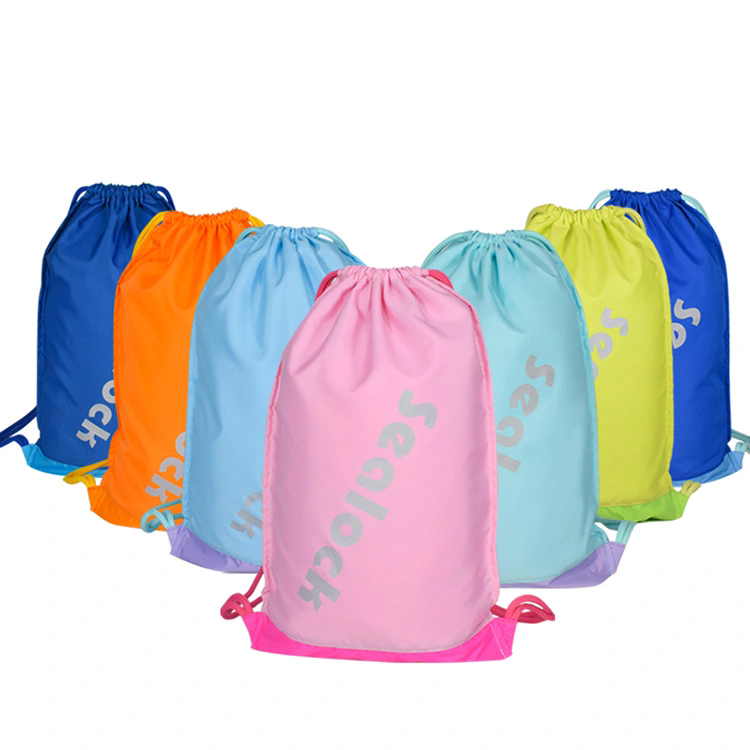The Ultimate Guide to Waterproof Dry Bags: Keep Your Gear Safe and Dry
2025-01-04
When you’re venturing into the great outdoors, whether it's hiking, kayaking, or even just a day at the beach, one thing is certain: you need to keep your gear dry. And there’s no better way to do that than with a waterproof dry bag. These versatile and durable bags have become essential for anyone who needs to protect their valuables from water, moisture, and even dust.
In this blog, we’ll dive into the features, uses, and benefits of waterproof dry bags, along with some tips on how to choose the best one for your needs.
What is a Waterproof Dry Bag?
A waterproof dry bag is a sealed container made from materials that are resistant to water. These bags are designed to keep your items dry, no matter how wet the conditions around you get. Whether you’re caught in the rain, splashing through waves, or paddling through rivers, a waterproof dry bag is built to withstand moisture and protect your belongings.
The bag's waterproof capability comes from its material—usually high-quality PVC, tarpaulin, or nylon—and its airtight closure system, which is often a roll-top or zip-lock design. This ensures that water cannot penetrate, keeping your electronics, clothing, food, and other valuables dry even in the harshest of conditions.
Key Features of Waterproof Dry Bags
1. Waterproof Materials: The main feature of a waterproof dry bag is its ability to keep water out. These bags are often made from tough, water-resistant materials such as PVC, tarpaulin, or coated nylon. The material is designed to resist tears and abrasions, ensuring your gear stays safe and dry.
2. Roll-Top Closure: Most waterproof dry bags come with a roll-top closure system, which involves rolling down the top of the bag several times and then securing it with a buckle. This creates a watertight seal and ensures that no water can get inside.
3. Durability: Waterproof dry bags are built to last. They are usually reinforced with tough seams and high-quality stitching, making them highly durable and resistant to damage from punctures or abrasions. Whether you're kayaking through rough waters or hiking through dense brush, these bags are designed to take on the elements.
4. Variety of Sizes: Waterproof dry bags come in a range of sizes, from small 1-liter bags to large 40-liter bags and beyond. This variety allows you to choose the right size depending on the type of trip and the gear you need to protect.
5. Versatility: Waterproof dry bags are not just for water-related activities. They're also great for protecting your gear from dust, dirt, and sand. Whether you’re at a music festival, on a dusty road trip, or camping in the desert, a waterproof dry bag can keep your belongings secure.
6. Lightweight and Compact: Despite their tough exterior, waterproof dry bags are usually lightweight and foldable. This makes them easy to pack and carry, whether you’re heading out for a day or a week-long adventure.
Benefits of Using Waterproof Dry Bags
1. Protection from the Elements: The primary benefit of a waterproof dry bag is, of course, its ability to keep your gear dry. Whether you’re caught in a downpour, splashing through water, or just want to protect your belongings from humidity, a dry bag keeps your gear safe from water damage.
2. Versatility Across Activities: Waterproof dry bags are perfect for a wide range of outdoor activities. Kayakers, canoeists, boaters, hikers, campers, and even travelers who want to protect their electronics from rain will find these bags useful. If you enjoy water sports or outdoor adventures, a dry bag is an essential accessory.
3. Peace of Mind: There’s nothing more stressful than worrying about your phone, wallet, or camera getting soaked. With a waterproof dry bag, you can rest easy knowing that your valuable gear is safely sealed away, no matter how wet the environment gets.
4. Organized Storage: Waterproof dry bags are not only useful for keeping your gear dry—they can also help you stay organized. Many models come with interior compartments or mesh pockets, allowing you to separate smaller items such as keys, toiletries, and electronics from larger items like clothes and food.
5. Durability for Tough Conditions: Waterproof dry bags are designed to withstand harsh conditions. Whether you're kayaking through rocky rapids or trekking through a wet forest, these bags are made to hold up against rugged environments. Many also come with reinforced handles or straps for easy carrying.
How to Choose the Right Waterproof Dry Bag
Choosing the right waterproof dry bag can depend on several factors, including the activity you’ll be doing, the amount of gear you need to store, and your preferred carrying style. Here are some things to consider when making your decision:
1. Capacity: Dry bags come in various sizes, typically ranging from 1 liter to 40 liters or more. The size you choose will depend on how much gear you need to carry. For day trips, a small 5-10 liter bag might suffice, while longer expeditions or multi-day trips may require larger bags. Consider the items you need to protect and choose a size that fits them comfortably.
2. Material: While most waterproof dry bags are made from durable materials like PVC, tarpaulin, or nylon, it's important to choose one that fits your needs. PVC is the most common and offers great protection, but if you're looking for a more eco-friendly option, some brands offer dry bags made from recycled materials.
3. Closure Type: The roll-top closure is the most popular option for waterproof dry bags, as it provides an excellent seal. However, some dry bags feature zipper closures, which are more convenient for quick access but might not be as watertight as roll-top designs. Choose the type that fits your needs and the level of waterproofing you require.
4. Durability: Make sure to choose a dry bag that can withstand the conditions you’ll be putting it through. Look for reinforced seams, sturdy straps, and high-quality materials that will hold up against abrasion, tears, and rough handling.
5. Carry Options: Some dry bags come with shoulder straps, backpack-style straps, or handles for easy carrying. Depending on the activity, you may want a bag that’s comfortable to wear for long periods or one that’s easy to carry by hand.
6. Special Features: Some dry bags come with additional features, such as exterior mesh pockets, reflective details for visibility, or waterproof zippers for added security. Consider these extra features if they align with your specific needs.
Tips for Using Waterproof Dry Bags
- Don’t Overfill: Overstuffing your dry bag can compromise the seal and reduce its effectiveness. Make sure to leave some room at the top for the roll-top closure to work properly.
- Seal Properly: Always roll the top of your dry bag at least three times to ensure it’s fully sealed. This is crucial to maintaining the waterproof integrity of the bag.
- Check for Leaks: Before heading out, check your dry bag for leaks by filling it with water (or air) and gently squeezing it. This will help you identify any weaknesses in the seal.
- Store in a Dry Place: When not in use, store your dry bag in a cool, dry place to prevent wear and tear. Make sure it’s thoroughly dry before storing it to avoid mold or mildew.
Conclusion
Whether you're going on an adventure near water or simply want to protect your gear from the elements, a waterproof dry bag is an invaluable tool for keeping your belongings safe and dry. With their durability, versatility, and variety of sizes, these bags are an essential accessory for anyone who enjoys outdoor activities. From kayaking and camping to hiking and traveling, a waterproof dry bag ensures that your gear stays protected no matter the weather. So next time you're heading out on an adventure, don't forget to pack a waterproof dry bag—you’ll be glad you did!



